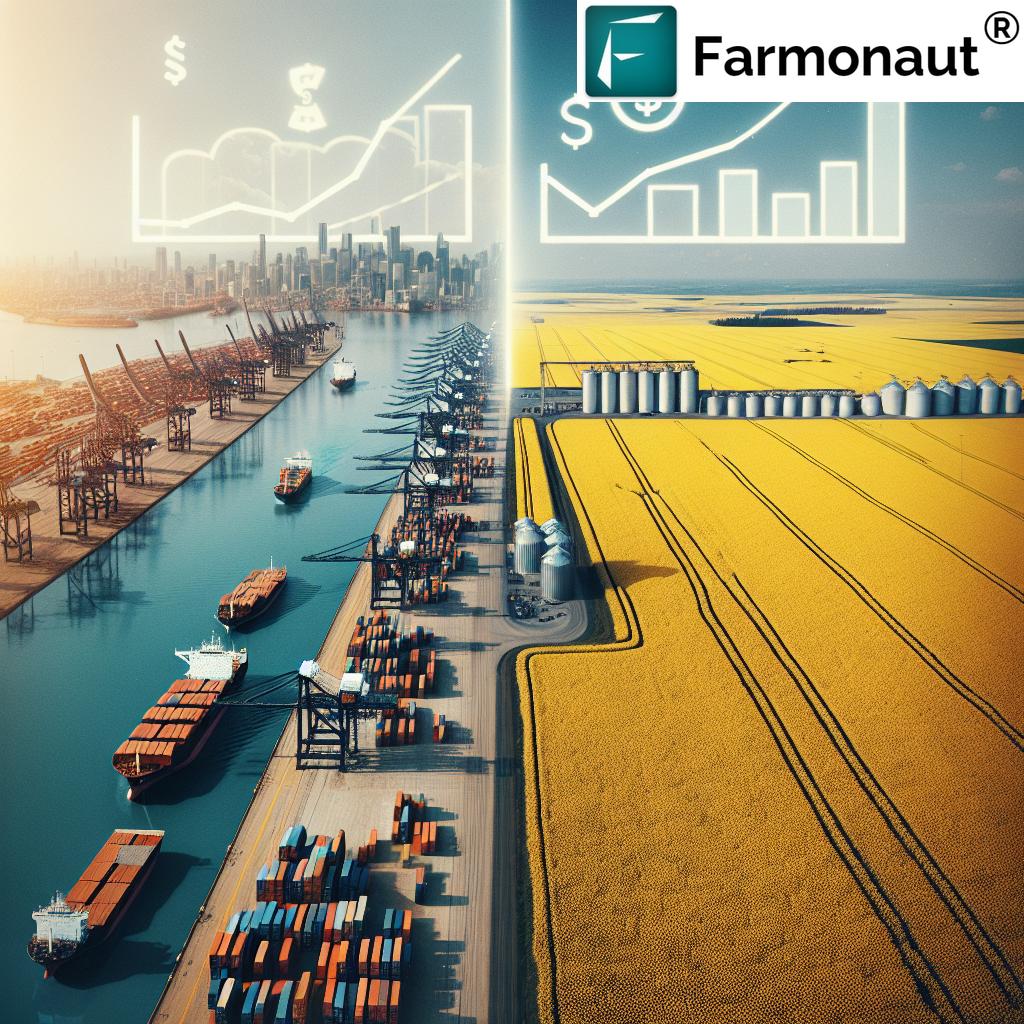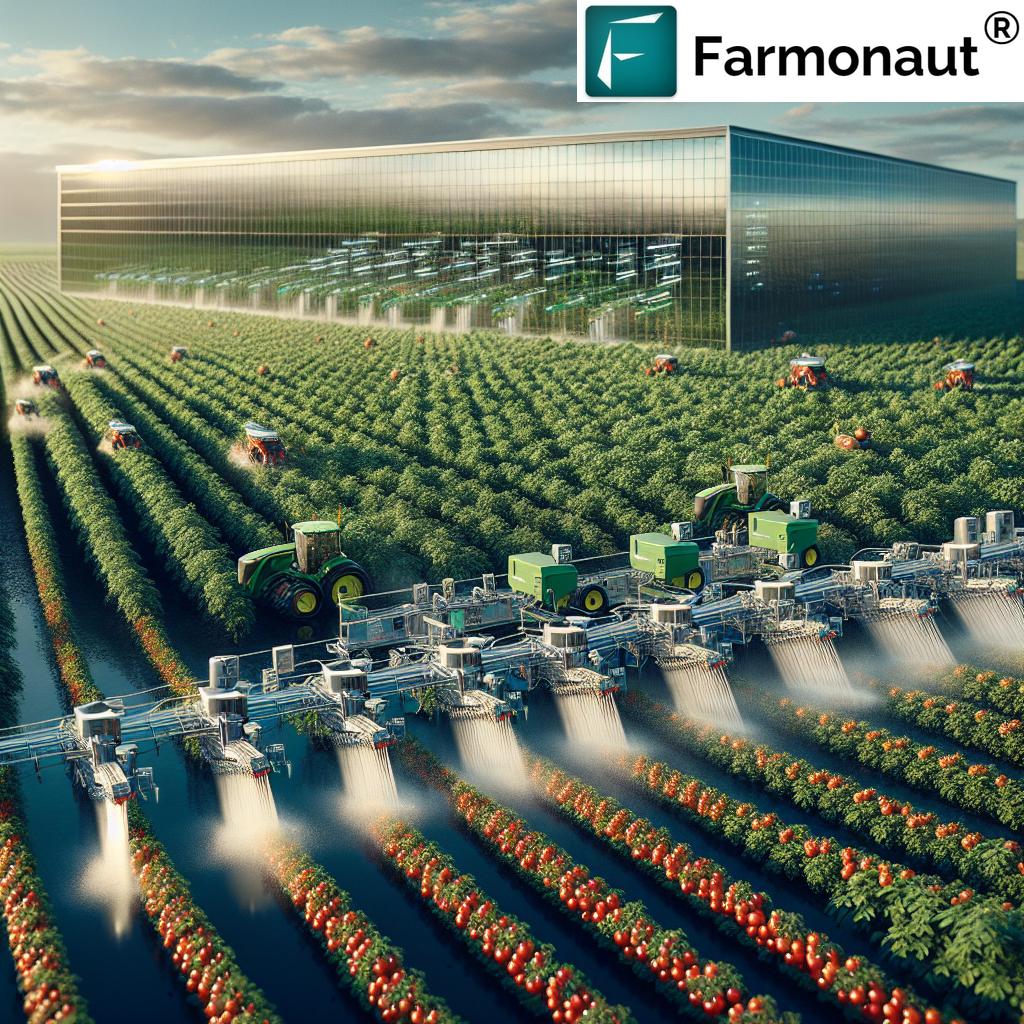BC Old Growth Forest Conservation: 2025 Vital Shifts
BC old growth forest conservation stands at the forefront of sustainable development, ecological stewardship, and socioeconomic transformation in British Columbia in 2025. As we approach this critical juncture, balancing environmental values with economic needs is more vital than ever. This comprehensive post reviews the imperative strategies, challenges, and opportunities shaping the province’s future as a global conservation leader.
“Over 1,000 new forest conservation jobs are projected in BC by 2025 due to old growth protection strategies.”
Summary: The Imperative of Old Growth Forest Conservation in British Columbia’s Forestry Sector in 2025
British Columbia (BC) is home to some of the world’s most extensive, ecologically significant old growth forests. These ancient ecosystems, comprising trees that have stood for centuries, are vital for biodiversity, carbon sequestration, and cultural heritage. In 2025, bc old growth forest conservation remains a critical issue for the province’s forestry sector, requiring careful balancing of economic interests, environmental stewardship, and Indigenous rights.
The evolving focus in bc forestry old growth strategies centers on maintaining ecological health, building a robust green economy with new forest conservation jobs, and integrating advanced technology and Indigenous knowledge into decision-making. This post dives into the complexities and solutions that define the landscape of forest conservation in British Columbia for 2025—and beyond.
“BC’s 2025 plan aims to increase sustainable forestry practices across 4.5 million hectares of old growth forests.”
Ecological and Economic Significance of BC’s Old Growth Forests
Why Old Growth Forests Matter in British Columbia
Old growth forests in British Columbia are not just complex, beautiful ecosystems—they are vital for the province’s ecological health and socioeconomic future.
- Complex Structure and Biodiversity: These ancient forests are made up of multi-layered canopies, dead wood, and rich soils, supporting diverse species—many of which are rare or endangered.
- Carbon Sequestration: Old growth stands act as crucial carbon sinks, storing far more carbon per hectare than younger forests, and thus play a major role in mitigating climate change.
- Watershed Protection: British Columbia’s forests regulate water flow, prevent soil erosion, and maintain water quality for both humans and wildlife.
- Habitat Connectivity: The connectivity provided by continuous old growth is essential for species movement and population stability, including crucial wildlife like caribou, owls, and bears.
- Cultural Heritage: For many Indigenous communities within BC, these forests are culturally significant, providing a link to traditions, medicines, and materials spanning generations.
Economic Role of Forestry: Past and Present
While forestry has long been a cornerstone of BC’s economy, creating thousands of jobs in wood processing, logging, and forest management, traditional practices such as clear-cutting of old growth stands have led to a decline in these irreplaceable ecosystems. This has prompted calls for more sustainable approaches—a trend that is only accelerating in 2025.
- Economic Transition: The move towards forestry conservation is creating new jobs in areas such as forest conservation, remote monitoring, ecological restoration, and green technology.
- Balanced Interests: Key to bc old growth forest conservation is balancing environmental needs with market demands for timber, and the economic health of BC communities.
Advancements and Challenges in Old Growth Forest Conservation
Current Advancements in BC Forestry Old Growth Conservation
In 2025, BC forestry old growth conservation is marked by transformative developments, stemming from both technological progress and a societal pivot towards long-term environmental stewardship.
- Government-Led Policies: Provincial policies now actively designate and protect old growth areas, limit timber harvesting in sensitive zones, and call for integrating traditional Indigenous knowledge into management plans.
- Technology-Driven Monitoring: Remote sensing, satellite monitoring, and AI-driven timber assessment tools are enabling precise mapping, tracking, and enforcement of new regulations.
- Collaborative Stakeholder Involvement: Environmental organizations and Indigenous communities are more deeply embedded in decision-making than ever before.
- Expanded Restoration Efforts: Large-scale ecological restoration campaigns are underway, including planting native species and rehabilitating degraded areas adjacent to protected stands.
Key Challenges Facing Old Growth Conservation in 2025
- Economic Pressures: Forestry companies are facing reduced timber harvest volumes from old growth, which must be offset by economic incentives, workforce retraining, and the creation of forest conservation jobs.
- Stakeholder Tension: Competing interests between environmental and economic priorities sometimes lead to conflict, necessitating more collaborative approaches.
- Enforcement and Compliance: Despite new policies, monitoring illegal or unsustainable logging in remote areas, and ensuring regulatory compliance, remains a practical challenge.
- Meaningful Indigenous Involvement: Ensuring that Indigenous rights are respected, and that communities receive equitable economic benefits, is essential for the future of sustainable forestry in BC.
Forest Conservation Jobs: Growth & Transition in BC’s Sector
The shift to forestry conservation has fostered an expanding sector for forest conservation jobs throughout British Columbia. This trend supports both the province’s economy and its global leadership in sustainability.
Roles Created by BC Old Growth Forest Conservation
- Forest Ecologists & Conservation Scientists: Lead monitoring of ecosystems, assess forest health, and inform management plans.
- Land Use Planners: Help with spatial planning and policy implementation for protected areas and restoration zones.
- Indigenous Stewardship Coordinators: Integrate traditional knowledge with new conservation methods; crucial for reconciliatory practices.
- Restoration Specialists: Reforest, rehabilitate, and maintain degraded forests for climate resilience and biodiversity recovery.
- Technology Operators: Utilize tools for remote sensing, satellite imagery analysis, and AI-based mapping.
Training & education are also evolving, equipping workers with the skills needed for ecological monitoring, technology operation, and collaborative management.
Connected Resource:
Farmonaut Fleet and Resource Management Tools
Improve operational efficiency and safety for your forestry or conservation teams by utilizing fleet and resource management tools. Our platform enables optimal logistics and resource allocation for forest management and restoration activities, reducing costs and supporting sustainability goals.
2025 Key Conservation Strategies Comparison Table
| Strategy Name | Main Objective | Estimated Impact | Associated Technologies/Methods | Implementation Challenges |
|---|---|---|---|---|
| Sustainable Harvesting | Balance timber production with ecological integrity by restricting harvest in old growth areas | Up to 200,000 hectares managed; 500 new jobs | Selective logging, reduced-impact logging, mapping via satellite & remote sensing | Reduced industry revenue; monitoring and compliance cost |
| Protected Area Expansion | Designate new reserves and parklands to shield old growth and habitats | Up to 1 million hectares newly protected; substantial CO₂ sequestration | GIS mapping, legislative designation, stakeholder consultation | Stakeholder resistance; long designation timeline |
| Indigenous Stewardship Initiatives | Preserve and restore forests under Indigenous rights and traditional knowledge | 50,000-100,000 hectares; 150 new jobs | Traditional ecological knowledge, co-managed planning, eco-cultural mapping | Capacity building, economic disparity, consistent engagement required |
| Technology Integration | Boost monitoring, enforcement, and planning using advanced digital tools | Enhanced compliance; 200+ jobs in tech/analytics | Remote sensing, satellite monitoring, AI-driven risk assessment | High cost of initial investment, skills gap in workforce |
Technological Innovations in BC Forestry Conservation
The 2025 era of bc old growth forest conservation features powerful technological advancements that make monitoring, assessment, and enforcement of conservation policies both scalable and sustainable.
Examples of Technologies Transforming Forest Conservation
- Remote Sensing & Satellite Monitoring: High-resolution multispectral imagery enables the precise mapping of old growth stands, detection of unauthorized logging, and health tracking of forests. These methods are increasingly affordable and thus more accessible to governmentand communities alike.
- AI-Driven Timber Assessment & Analysis: Artificial intelligence systems process complex data sets, such as tree age, species composition, and carbon storage potential, enabling rapid site evaluations.
- Blockchain Traceability: Ensures timber from legal, sustainable sources can be identified throughout supply chains, supporting transparency and global market access.
- Drone Surveillance: Drones supplement satellites by offering hyper-local, real-time visuals, crucial for quick response to illegal activity or wildfires.
Blockchain for Forest Traceability
Farmonaut Blockchain-Based Traceability enables real-time tracking of timber and non-timber forest products, protecting against illegal logging and supporting compliance with domestic and international law. This technology also enhances trust for BC’s wood products in the global market.
API Access for Developers
For those developing forest conservation solutions, our
Farmonaut API and Developer Documentation provide easy integration of satellite insights directly into applications for monitoring, mapping, or analytics.
Indigenous Rights and Stewardship in Old Growth Conservation
Central to bc old growth forest conservation in 2025 is the recognition and integration of Indigenous rights and stewardship. Indigenous peoples have sustained and managed these ecosystems for millennia, employing traditional ecological knowledge to maintain health and resilience.
- Meaningful Participation: Policy now strongly encourages the inclusion of Indigenous leadership in planning, protection, and resource allocation, especially in sensitive old growth areas.
- Benefit-Sharing: New models aim for fair economic returns to local communities for ecosystem services, sustainable timber harvesting, and job creation.
- Knowledge Integration: Indigenous land-care practices, fire management, and restoration strategies are now regarded as essential complements to scientific forestry.
Supporting Community-Led Restoration
For projects led by First Nations or allied local groups, Farmonaut Crop Plantation & Forest Advisory provides up-to-date insights on ecosystem health, planting schedules, and adaptive restoration strategies using real-time satellite data.
BC Government Policies: 2025 and Beyond
As of 2025, the provincial government has implemented a wave of new policies and support structures to safeguard old growth forests within British Columbia:
- Old Growth Deferrals: Moratoria placed on timber harvesting in millions of hectares of high-value old growth, while long-term protection plans are developed.
- Restoration Incentives: Subsidies, grants, and tax breaks for restoration projects that rehabilitate previously logged or degraded lands near vital old growth stands.
- Carbon Accounting: Requirements for companies to monitor and report carbon sequestration impacts of logging and restoration projects.
- Legally Mandated Indigenous Involvement: All major conservation decisions must include formal input from affected First Nations—or risk being overturned.
- Wildfire Risk Management: Increased funding for fire mitigation, fuel break construction, and rapid response infrastructure, protecting both communities and key old growth ecosystems.
Carbon Footprinting and Sustainability
The drive towards net-zero goals in BC’s forestry means carbon assessment is not optional. Farmonaut Carbon Footprinting Solutions enable accurate tracking of emissions and sequestration, ensuring compliance with evolving local and global carbon accounting standards.
Real-World Applications: Remote Sensing, Monitoring & Mapping in BC Old Growth Forest Conservation
How Modern Tools Support Conservation Goals
Advancements in remote sensing and satellite imaging are game-changers for bc old growth forest conservation, granting unprecedented visibility into even the most inaccessible areas. Thanks to satellite technology, field teams can:
- Pinpoint the exact locations and extent of old growth stands to ensure effective protection and restoration.
- Track changes over time, quickly identifying illegal logging or disease outbreaks that threaten forest health.
- Model the impacts of various management plans to optimize resource use while preserving biodiversity.
- Integrate data across disciplines for a holistic approach to forest conservation and sustainable forestry.
These methods enable transparent, data-driven governance that supports BC’s role as a leader in sustainable, resilient forestry sectors worldwide.
Sustainability, Climate, and the Global Imperative
British Columbia’s old growth forest conservation is not just a regional initiative; it aligns with the world’s climate commitments and global sustainability trends. Old growth forests are some of the world’s most powerful carbon sinks, and their preservation is key to global climate goals set by bodies such as the United Nations and the Intergovernmental Panel on Climate Change (IPCC).
- Carbon Market Opportunities: Protection of old growth can generate credits in global carbon marketplaces, incentivizing both public and private sector involvement.
- Export Market Access: Sustainable forestry practices and supply chain traceability are increasingly required by international buyers, aligning with BC’s competitive advantage.
- Leadership in Green Innovation: BC is becoming a model for jurisdictions worldwide seeking to combine economic growth with robust environmental stewardship.
Large-Scale Forest Management & Advisory
Landowners, businesses, and agencies managing conservation projects can utilize our Large Scale Farm Management App for real-time monitoring and planning of extensive forest and habitat zones within BC’s 4.5 million-hectare conservation area.
Farmonaut’s Role in 2025 Forest Conservation
How Our Satellite and Data Solutions Empower Forest Conservation in BC
At Farmonaut, we are deeply invested in providing affordable, advanced satellite-based technologies and AI-driven advisory systems to support and scale the conservation, monitoring, and management of old growth forests and adjacent ecosystems. Our platform seamlessly serves all levels of stakeholders—from individual users to businesses and government agencies—in the BC forestry sector and beyond.
- Real-Time Monitoring: We offer live, satellite-based insights for forest health, ecological disturbance detection, and illegal activity reporting.
- AI-Driven Decision Support: Our Jeevn system helps optimize management strategies, restoration efforts, and carbon sequestration modeling, aligning with local and international policy benchmarks.
- Blockchain Traceability: Our technology secures forest supply chains, ensuring market trust and compliance with global regulations for timber and non-timber products.
- Resource Management: Our fleet solutions streamline logistics for on-ground teams, promoting safety, operational efficiency, and eco-friendly practices across diverse and challenging environments.
- Affordability & Scalability: Our products are cost-effective at every scale, from family-run forestry operations to provincial agencies safeguarding millions of hectares.
Conclusion: Towards a Resilient, Sustainable Forestry Future
In summary, bc old growth forest conservation in 2025 is not simply a policy or industry trend. It is an imperative for the future of British Columbia—ecologically, economically, and socially. By defending the world’s most significant ancient ecosystems, integrating advanced technology, and fostering meaningful Indigenous stewardship, BC delivers a model for global conservation.
As new opportunities, such as the development of forest conservation jobs and the expansion of green sectors, reshape the province’s economy, a new era of collaborative stewardship is emerging—one that unites tradition, innovation, and a shared commitment to the forests that support British Columbia’s unique identity.
By adapting thoughtfully to these vital shifts, everyone in BC—including the forestry industry, Indigenous communities, government, and technology providers—can thrive together. As we look to the next decade and beyond, the rest of the world is watching—and learning from—the blueprint being built in British Columbia today.
FAQ: BC Old Growth Forest Conservation
What defines an “old growth forest” in British Columbia?
Old growth forests in BC are comprised of ancient trees and ecosystems that have developed over centuries, with some trees exceeding 800 years in age. They are structurally complex, with a mix of tree ages, large woody debris, and unique biodiversity.
Why is conserving BC’s old growth forests essential for climate change?
Old growth forests are crucial carbon sinks, storing vastly more carbon per hectare than younger forests. Their preservation directly helps in mitigating climate change by reducing atmospheric CO2 levels and supporting climate resiliency.
How is technology being used to support BC old growth forest conservation?
Technologies such as remote sensing, satellite monitoring, AI-driven analytics, and blockchain traceability enable detailed ecosystem assessment, compliance monitoring, and supply chain transparency, all while reducing costs.
What types of jobs are being created as a result of new conservation strategies?
The transition to sustainable forestry has created new jobs in roles including conservation science, restoration, remote sensing technologies, Indigenous stewardship, planning, and monitoring.
How can communities and organizations get involved in BC forestry old growth conservation?
By collaborating with local and Indigenous groups, accessing new monitoring technologies, and engaging with provincial and federal programs, stakeholders can drive both policy and on-ground conservation efforts. Adopting data-based management through platforms like Farmonaut strengthens these outcomes.













